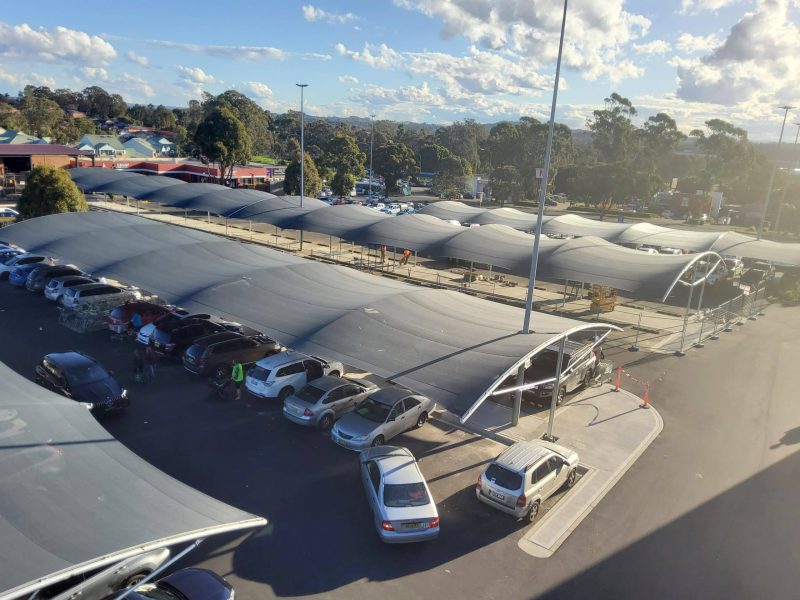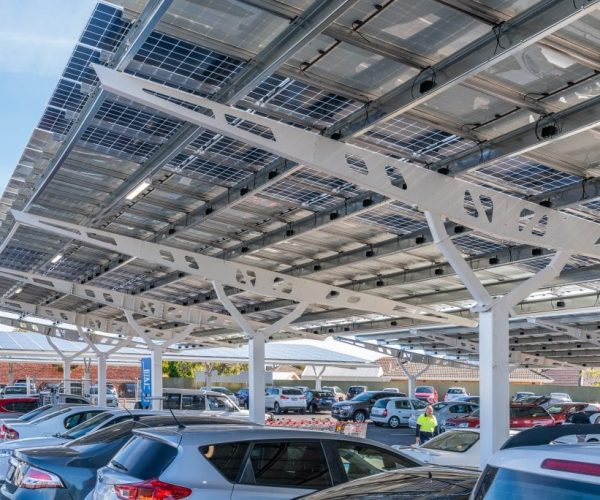Solar Shade Structures: Key Variables to Consider Prior to Designing & Constructing
Solar shade structures have actually acquired appeal as a multifunctional service that incorporates the advantages of providing shade and defense with the generation of clean and also renewable resource. In this write-up, we will explore the world of solar shade structure layout and also building, checking out the diverse alternatives available. From materials and shapes to installation strategies, we will certainly analyze how innovative layout selections can maximize energy manufacturing while developing cosmetically pleasing and also useful structures that add to a lasting future.

Solar shade structures have become a progressively preferred choice for a wide variety of applications, consisting of parking lots, leisure locations, as well as exterior gathering spaces. These structures not only offer shade and also defense from the sun's extreme rays however additionally harness solar power to create power. Let's explore the vital facets of solar shade structures.
I. Materials for Solar Shade Structures
The products made use of in the building of solar shade structures play a substantial role in their durability, looks, and energy effectiveness. Below are some common products used:
Steel:
Steel provides phenomenal strength as well as resilience, making it a suitable choice for larger structures. It can stand up to severe weather and provide lasting assistance for solar panels. Additionally, steel can be recycled, making it an environmentally friendly option.
Light weight aluminum:
Comparable to steel, aluminum is lightweight, corrosion-resistant, and widely utilized in solar shade structures. It is especially appropriate for areas near seaside regions, as it is resistant to deep sea deterioration. Aluminum structures additionally have a high recycling price, adding to sustainability.
Wood:
Timber supplies a more natural as well as cosmetically pleasing alternative for solar shade structures. It blends well with outside environments as well as can be dealt with to enhance its sturdiness as well as resistance to weathering. Utilizing sustainably sourced as well as licensed wood is advised to minimize ecological effect.
Fabric Membrane layers:
Fabric membrane layers use adaptability and also translucency, enabling diffused sunlight to infiltrate while offering shade. They are typically utilized in sail-like structures, adding a special and creative touch to outdoor rooms. Choosing high-grade, UV-resistant textiles ensures durability and optimal performance.
II. Shapes as well as Building Considerations
Solar shade structures come in various shapes and sizes, using personalization alternatives to suit various areas and purposes. Right here are some popular designs:
Cantilever Structures:
Cantilever structures feature an overhanging style that offers unobstructed area below. These structures are specifically ideal for car parks, as they use ample shade without hindering auto parking or motion. Cantilever structures can be developed with single or numerous arms, relying on the dimension as well as layout requirements.
Multiple-Column Structures:
Multiple-column structures offer a modular approach, offering versatility as well as scalability. This design enables very easy growth and also modification to suit various locations as well as future needs. The spacing between columns can be enhanced to make the most of shade coverage and photovoltaic panel plan.
Sail-like Structures:
Sail-like structures are commonly utilized in outdoor leisure areas, providing a creative as well as aesthetically appealing layout. These structures develop distinct shapes and shadows while successfully utilizing solar energy. The tensioned fabric membranes made use of in sail-like structures can be tensioned with wires or steel frameworks to accomplish the preferred form.
Architectural considerations, such as the orientation of the structure, additionally play a crucial function in optimizing solar energy generation. Straightening the structure to deal with the sunlight's path maximizes power production, while the incorporation of solar car parking structures solar radar better boosts efficiency by following the sun's movement throughout the day.

III. Setup Approaches and also Structure Systems
The installment approaches for solar shade structures depend upon site problems and design demands. Right here are some common installment techniques:
Ground-Mounted Equipments:
Ground-mounted systems are normally used in open rooms and call for structures such as concrete footings or ground screws. These structures are functional and also can be conveniently adapted to enhance sunlight direct exposure. Ground-mounted systems are commonly used for solar parking area structures and also larger-scale shade setups.
Roof Installations:
Rooftop setups make efficient use existing structures, such as structures or carports. These installments are space-saving as well as can make use of the readily available rooftop location for solar energy generation. Rooftop setups need appropriate structural analysis to make certain the roof can take care of the additional weight of the solar shade structure.
Integrated Equipments:
Integrated systems incorporate the solar panels with the structure itself, flawlessly blending renewable energy generation with functional shade provision. These systems give a cohesive as well as aesthetically appealing design. Integrated systems are generally used in building tasks where the solar shade structure becomes an essential part of the total building or landscape style.
Structure systems play a critical function in the security and also durability of solar shade structures. Options such as ballasted systems, pile structures, and concrete grounds supply security in various dirt conditions. Design competence is important in identifying the proper structure system based on elements such as wind loads, soil problems, and local building regulations. Proper foundation style makes sure the structure can hold up against environmental forces and maintain architectural integrity in time.
IV. Aesthetics and Combination
Visual appeals and assimilation are important factors to consider in solar shade structure style, as they make sure the structures blend sympathetically with the surrounding setting. Here are some bottom lines to take into consideration:
Style Components:
Integrating layout components such as rounded or geometric shapes, color customization, and imaginative patterns enables imaginative expression while preserving functionality. This makes it possible for solar shade structures to become visually attractive focal points within their corresponding settings. The selection of shades can additionally help with warmth reflection, lowering warm absorption within the structure.
Assimilation with Various Other Technologies:
Incorporating solar shade structures with other innovations as well as systems can better enhance their abilities. As an example, including power storage systems enables the storage space of excess power for use during non-sunny periods, optimizing power use. In addition, wise monitoring as well as control systems give real-time information on energy manufacturing as well as intake, enhancing efficiency and maintenance. Assimilation with LED lights systems can enhance the performance of solar shade structures, expanding their usability right into the night hours.
Ecological Factors to consider:
Sustainability must be a key focus when designing and also constructing solar shade structures. Choosing products with low ecological impact, utilizing recycled or recyclable products, and also executing energy-efficient technologies all add to creating environmentally friendly structures. Life cycle evaluations can be performed to examine the total environmental impact of the structure.
Regularly Asked Inquiries
Q1. What are the benefits of solar shade structures?
Solar shade structures give shade and also protection from the sun's rays while creating clean as well as renewable energy. They use a lasting option that adds to minimized power expenses and also ecological conservation. Solar shade structures can additionally improve outdoor convenience as well as create even more usable rooms.
Q2. Can solar shade structures be personalized to suit various places?
Yes, solar shade structures come in various sizes and shapes, enabling modification based upon the location's requirements as well as visual choices. Design options, products, and also installment methods can be tailored to fit specific applications as well as settings.
Q3. Are solar shade structures sturdy?
Yes, the toughness of solar shade structures depends upon the products utilized and appropriate building techniques. Steel and aluminum structures are recognized for their strength as well as durability. Wood structures can likewise be long lasting when treated as well as maintained correctly. Material membranes must be chosen based upon their resistance to UV radiation and also weathering.
Q4. How can solar shade structures add to energy performance?
Solar shade structures generate power with solar panels, reducing reliance on conventional power resources. Excess power can be stored for later usage, maximizing power application. Integrating energy-efficient lighting systems and also control systems additionally enhances power performance.
Final thought

Designing and building solar shade structures calls for cautious consideration of different elements, consisting of materials, forms, setup approaches, aesthetics, and also assimilation with other technologies. By leveraging cutting-edge style options and also building techniques, solar shade structures can offer shade as well as defense while generating clean as well as renewable resource. As the demand for sustainable energy services continues to grow, solar shade structures use a practical and visually enticing strategy to satisfying both environmental as well as functional needs. With proper layout as well as building and construction, solar shade structures can contribute to a more sustainable as well as energy-efficient future.